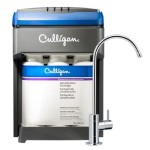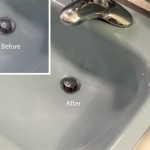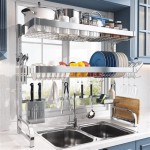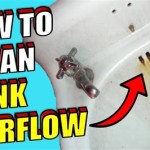How to Install a Bathroom Sink Stopper
Bathroom sink stoppers are essential for holding water in the sink basin for tasks such as washing hands or filling a bowl. Over time, stoppers can break or wear out, requiring replacement. Installing a new sink stopper is a relatively simple plumbing task that homeowners can typically handle themselves. This article will guide you through the step-by-step process of installing a bathroom sink stopper.
Prepare for Installation
Begin by gathering the necessary tools and materials for the installation. You will need:
- New bathroom sink stopper
- Adjustable wrench
- Channel-lock pliers
- Screwdriver (if applicable)
- Bucket or container
- Teflon tape (optional)
- Work gloves (optional)
Once you have assembled the required tools, turn off the water supply to the bathroom sink. Locate the shut-off valve under the sink and turn it clockwise to stop the water flow. If you have a double-sink vanity, ensure you shut off the correct valve for the sink you are working on. After shutting off the water, drain the sink by opening the drain plug. If applicable, remove any existing stopper assembly from the drain opening. This may involve loosening a nut or using the pliers to remove the stopper from the drain.
Connect the Stopper to the Drain Assembly
With the old stopper removed, you can begin connecting the new stopper to the drain assembly. Bathroom sink stoppers are typically designed with a threaded rod that screws into the drain tailpiece. The drain tailpiece is a short pipe that connects the drain assembly to the drain pipe. Insert the new stopper's threaded rod into the drain tailpiece and turn it clockwise until it is securely fastened. The stopper should be snug, but avoid overtightening. Some stoppers may come with an additional nut that needs to be fastened to the drain tailpiece with the adjustable wrench.
Some stopper designs may include a lift rod and a lever assembly. The lift rod is a metal rod that is connected to the stopper and extends up through the drain opening. The lever assembly is typically located on the top of the sink and is used to control the stopper. If your new stopper includes these components, carefully connect them according to the manufacturer's instructions. The lift rod should be threaded through the stopper and the lever assembly. The lever assembly may attach to the sink using screws or a clip.
Test for Leaks
After installing the new stopper, turn the water supply back on and check for any leaks. Open the faucet and allow water to flow into the sink. Inspect the connection points between the stopper, drain tailpiece, and drain assembly for any signs of leakage. If you notice any leaks, tighten the connections or replace any damaged or loose components.
Once you are satisfied that the stopper is installed correctly and there are no leaks, test the operation of the stopper. Open and close the stopper a few times to ensure it is working smoothly. If you have a lever assembly, make sure it is operating properly as well. If the stopper is not functioning properly, or if you continue to notice leaks, re-check the installation process and ensure all connections are tight.
Install A Drain Stopper So The Is Removable

How To Replace A Sink Stopper Quick And Simple Home Repair

Quick Tip 26 Pop Up Stopper Sticks Misterfix It Com

Getting Spring Clip To Stay On

Step By Guide On How To Install Sink Pop Up Drain Stopper
How To Install Bathroom Sink Drain Queen Bee Of Honey Dos

Fixing Tricky Pop Up Drain Sink Stopper Mechanisms Efficient Plumber

Installing This Anti Clogging Pop Up Drain Stopper Will Save You Thousands Bathroom How To Diy Youtube

How To Fix A Bathtub Or Sink Pop Up Stopper
How To Install Bathroom Sink Drain Queen Bee Of Honey Dos







